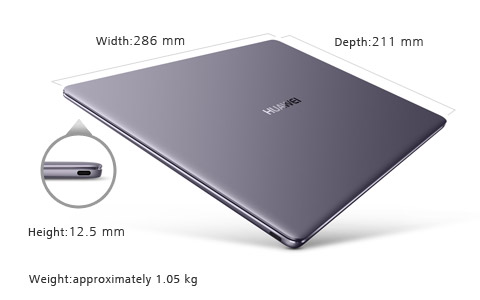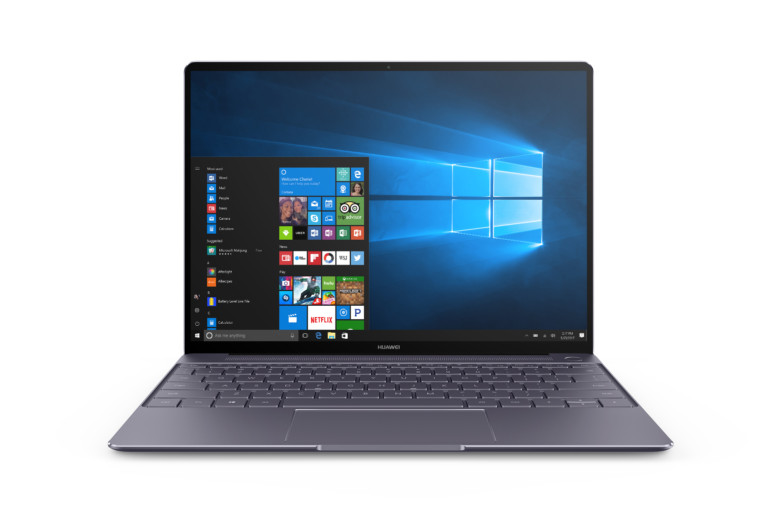The MateBook X drops the touchscreen and convertibility. It looks like the MacBook, it sounds like the MacBook and if laptops quacked, it would most likely do that a lot like the MacBook, too. The only surprise, really, is that it took this long. After all, the company hasn’t had too many bones about borrowing liberally from the iPhone.
And these days in the tech world, it seems, there’s no shame in the game of taking some clear inspiration from a successful line. Facebook’s certainly made no bones about the whole “good artists copy, great artists steal” bit that Jobs took from Picasso, or maybe Eliot or Stravinsky. Design language, for better or worse, seems to tend toward a central point in consumer electronics as a category matures.
Maybe it’s that certain choices simply make the most sense. Or maybe it’s just hard to borrow from the bits that work. Probably it’s some combination thereof. Certainly there’s a reason the MacBook line’s design has been so enduring in its relative simplicity. Whatever the case, Huawei is in a good position to deliver on a product that brings some of those lessons over to the Windows side of the fence — and in some cases, improve upon them.
That the company is offering a standalone laptop alongside the next-gen of its 2-in-1 isn’t a surprise. I was, however, taken a bit aback by the fact that it just went ahead and dropped touch altogether. After all, that’s been one of Windows 10’s big cross-device selling points.
When asked, the company explained the decision was made because the company wanted to “put its best foot forward” and “a big amount of the [laptop] business in the US is not touch,” which I take to mean that Huawei didn’t want to confuse the market with what’s supposed to be a straightforward laptop play.
What the company does offer, however, is a nice, if not entirely distinct laptop. It’s thin and light with a fanless design and has a 2K display. The real standout feature, however, is the Huawei’s work with Dolby. The audio company’s input on devices is usually limited to tweaking settings. This time out, however, Dolby was apparently involved directly in the creation of the on-board speaker hardware.
And it has a good-sounding speaker — something far too often overlooked when creating a laptop. I can say that confidentially as someone who, for better or worse, does much of his movie and TV watching on his laptop. I have a MacBook Pro, and I generally sync up Bluetooth headphones or speakers. It’s nice to see a company focused on that side of things. Audio is kind of the last stone left unturned when it comes to upgrading devices. So Apple can certainly learn a thing or two on that front.

Colour
Prestige Gold/Rose Gold/Space grey
Display
Size: 13 inches
Type: IPS
Corning® Gorilla® glass
Resolution: 2160 x 1440 pixels
Colours: sRGB 100% colour gamut
Contrast: 1000:1
Brightness: 350 nits
CPU
WT-W09: 7th Generation Intel® Core™ i5-7200U processor
WT-W19: 7th Generation Intel® Core™ i7-7500U processor
GPU: Intel® HD Graphics 620
Operation System
Windows 10 64-bit Home
Memory
256 GB / 512 GB SSD
4 GB / 8 GB LPDDR3
Network
IEEE 802.11a/b/g/n/ac, 2.4/5 GHz 2×2 MIMO
Connectivity
Standard: Bluetooth 4.1 (compatible with 3.0 and 2.1 + EDR)
Sensors
Ambient light sensor, fingerprint sensor, accelerometer, and Hall sensor
Battery
41.4 Wh (5449 mAh@7.6 V)
In The Box
HUAWEI MateBook Charger
Quick Start Guide
HUAWEI MateDock 2 (Standard in some models)
USB-C to USB-A cable (Standard in some models
Energy Efficiency
Products that earn the ENERGY STAR® prevent greenhouse gas emissions by meeting strict energy efficiency requirements set by the U.S. Environmental Protection Agency.
Source: Techcrunch and Huawei Official website

Leave a Reply